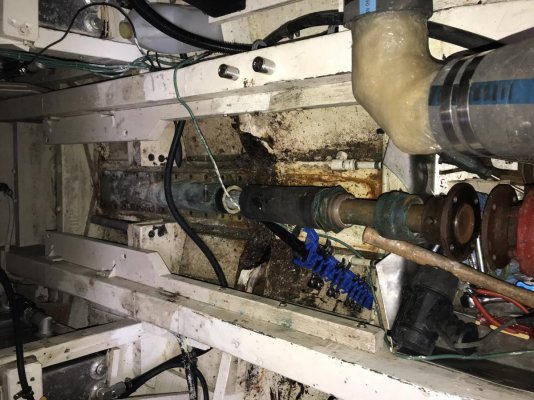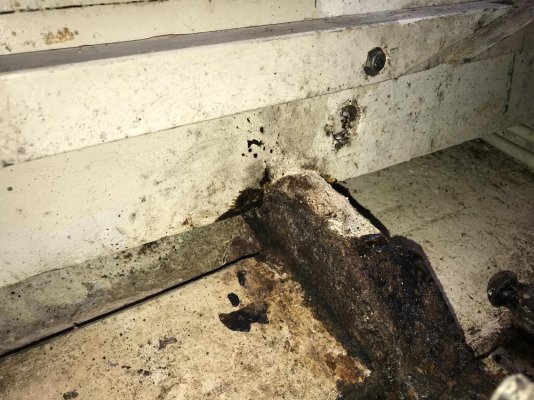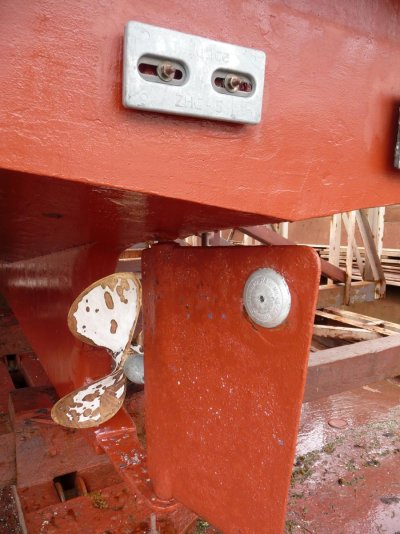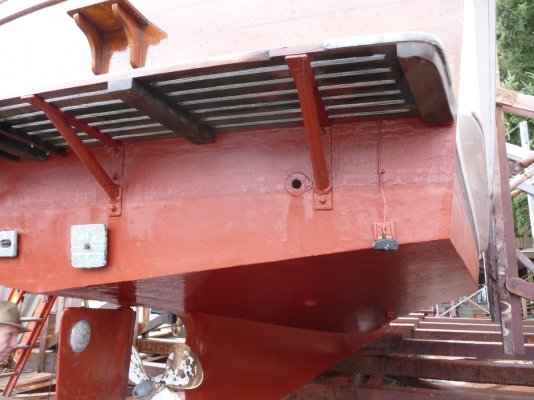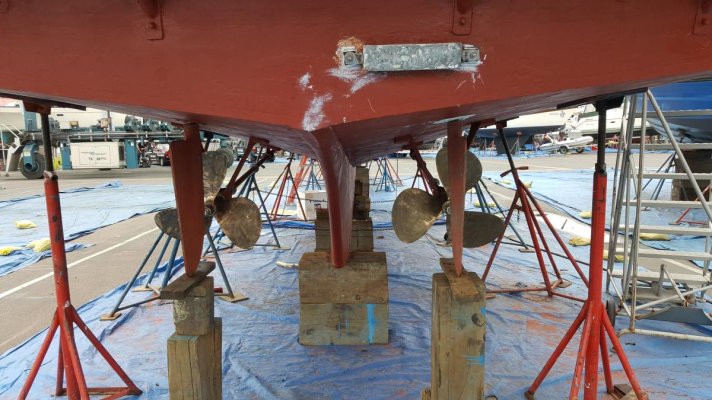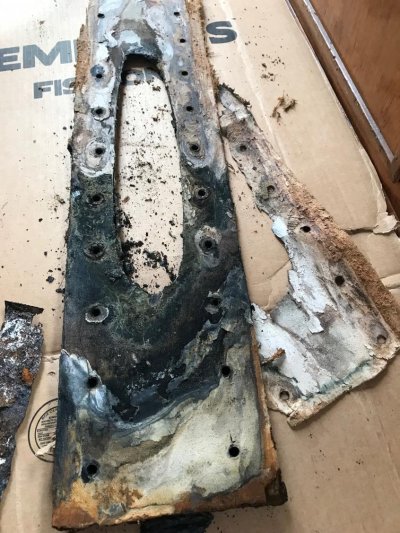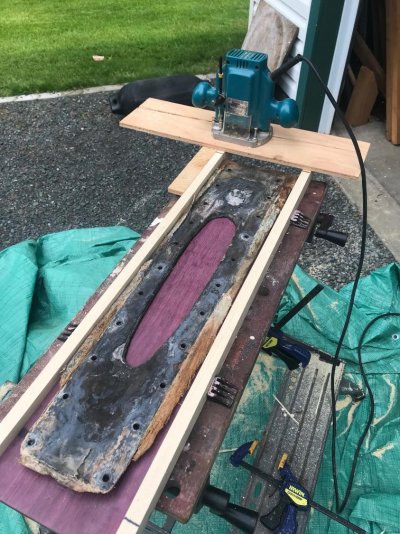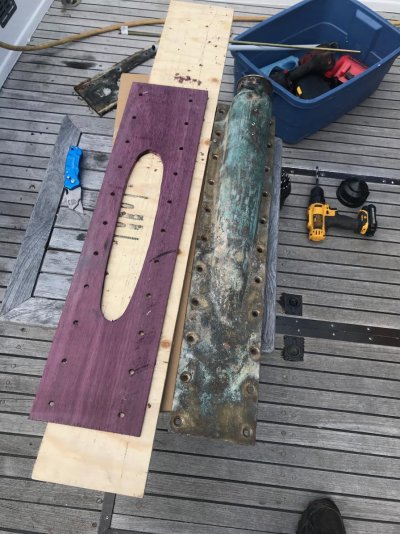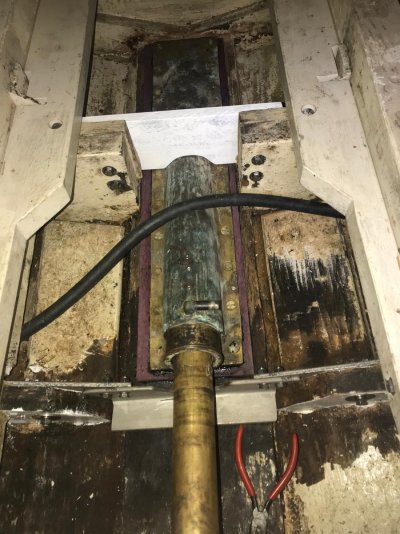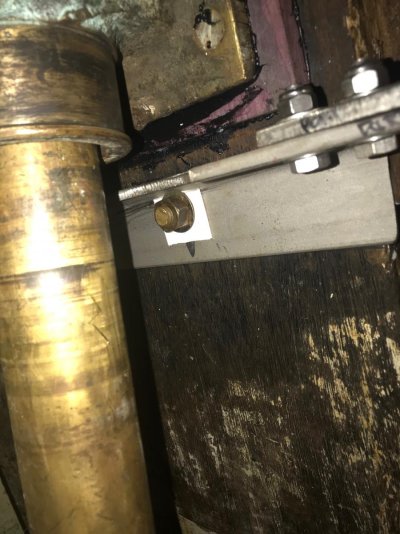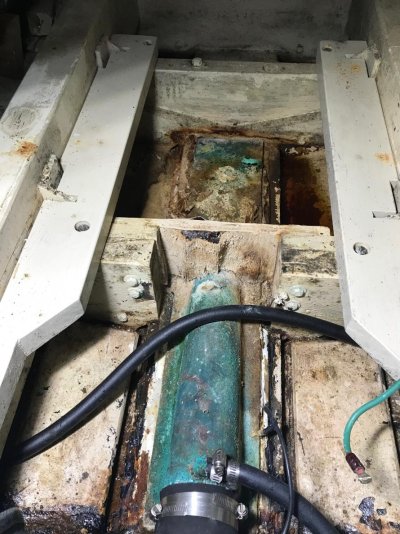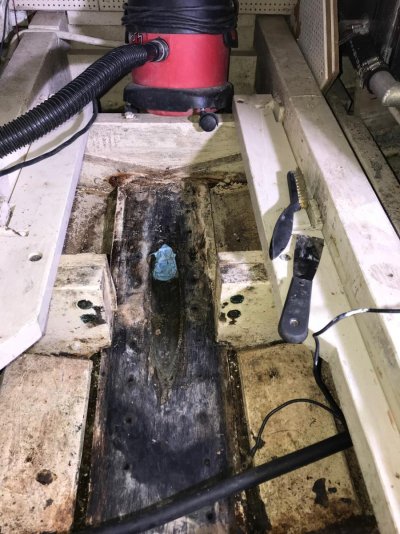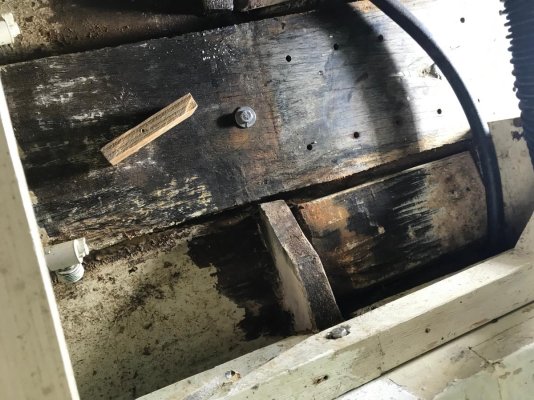Marinex
Veteran Member
Currently in a haul out to fix some serious over zinc damage around the shaft log and am stuck on how to move on from here. There is an original steel piece that spanned the rib gap where the shaft goes by. It is rusted beyond rust and at the ends where the bolts are the wood is quite wasted away. I am thinking of removing the steel and getting the yard to fabricate a new one from stainless? It may require a two piece design as the original
was put in before planks went on. Wood repairs wise , dig out and CPS hole and fill with epoxy or wood patch? If I can sister with stainless then hopefully that will go up far enough to good rib. To other wood boat owners reading this , this is what happens when previous owners tie all the fittings in a well intentioned but flawed bonding system in wood. We didn’t find this until we noticed water appearing from under the genset area and removed the genset , fortunately a slow weeping! Thanks for any ideas, I’ll post the final fix.
was put in before planks went on. Wood repairs wise , dig out and CPS hole and fill with epoxy or wood patch? If I can sister with stainless then hopefully that will go up far enough to good rib. To other wood boat owners reading this , this is what happens when previous owners tie all the fittings in a well intentioned but flawed bonding system in wood. We didn’t find this until we noticed water appearing from under the genset area and removed the genset , fortunately a slow weeping! Thanks for any ideas, I’ll post the final fix.

